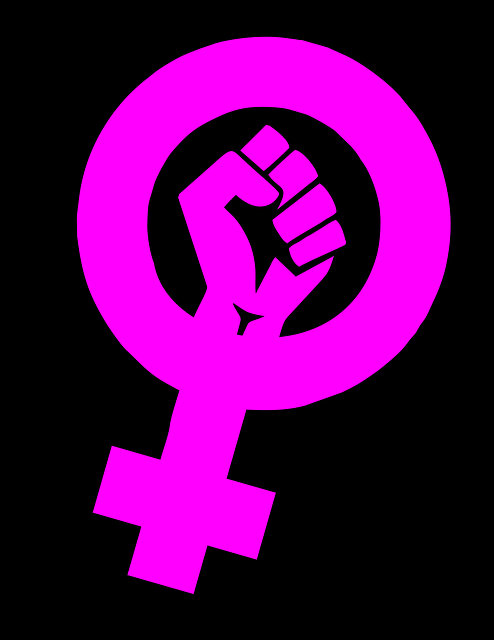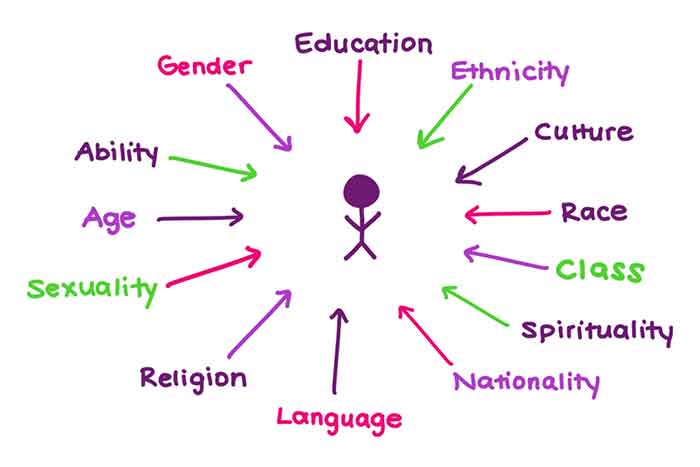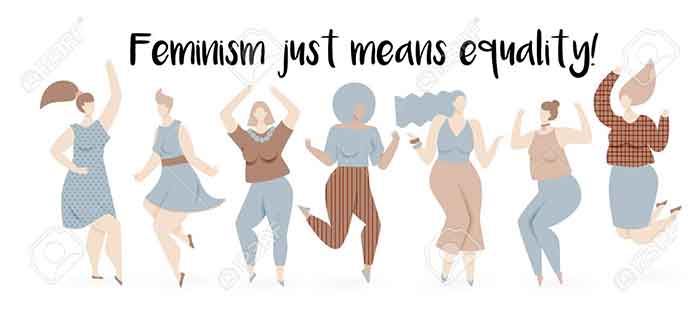
Feminism today occupies a substantially larger place in the popular imagination than it did in the past. While those who identified the “F word” were commonly viewed with apprehension, this appears to be progressively fading. What was once perceived as taboo has recently become a trendy subject of interest within popular culture, from woke hash-tags and tote bags to celebrities proudly sporting t-shirts that read “This is what a feminist looks like.” However, as ideas like shattering glass ceilings and breaking into traditionally male oligarchies gain acclaim as ideals for the #GirlBoss of the 21st century, inherently feminist issues like poverty, access to healthcare, minimum wages, a basic standard of living, etc., has simultaneously been pushed to the back burner. As a result, progressive feminists have become wary of this burgeoning brand of neoliberal feminism that is taking hold, and with good reason. So, what does mainstream feminism mean? Despite its commitment to equality and inclusive representation, who does it actually cater to? And, why is there an urgent need to reclaim feminism to its radical roots?
Reconfiguring History
It is necessary to return to the historical underpinnings of neoliberal feminism to make sense of its current ascent. The origin of liberal feminism also known as mainstream feminism has its foundations in the women’s liberation movement in the West. This movement arose on the heels of women’s demands for voting, property and education rights during the early nineteenth century. These feminist interventions prompted essential conversations on gender inequality and discrimination, followed by a second and third wave of demonstrations ranging from the politicisation of the private, uneven pay to reproductive rights, sexual harassment at the workplace and bodily autonomy while also criticising the androcentric welfare state. Nevertheless, it is evident that the movements were primarily portrayed and written from the viewpoint of middle-class and wealthy white women.
According to Lola Olufemi, the tidy recounting of feminist history in “three waves” paints a false picture of feminist development only in terms of rights and laws while conveniently ignoring Black and dissident voices from the Global South that struggled against oppressive institutions of enslavement and colonialism. This revolutionary branch of the feminist movement, which opposed capitalism and racism while also extending solidarity to national liberation movements throughout the world, was undercut in favour of a white-washed account of the women’s liberation movement. Deeply problematic in its tenets, White feminism has always sought to portray women as a monolithic category while ignoring women of colour, working-class, poor and trans women, and in most cases, even benefiting from their oppression. Hence, this liberal feminist narrative was able to earn credibility in the mainstream precisely because it served to keep the colonial, racist, capitalist, hetero-patriarchal systems intact.
A similar analogy also exists in the scholarship and movements of South Asian feminism, particularly in India. Whereas mainstream feminism in the West saw itself defending white supremacist capitalist patriarchy, mainstream feminism in India has contributed to maintaining the nexus of a Brahminical Capitalist Patriarchy. Savarna feminism is informed by the same exclusionary politics, with women from the mainland, typically from metropolitan, English-speaking, upper/middle-class, upper-caste origins, dominating the movement. This hegemonic takeover of feminist discourse and cause has frequently been at the expense of women from Dalit, Adivasi, Bahujan, Muslim, Indigenous and other marginal communities, resulting in the erasure of their history and leaving their narratives peripheral and, thereby invisible. From Dalit women’s participation in anti-caste movements of the 1920s and their efforts to advocate for better wages, representation and education for Dalit women, protests led by women for higher wages in the tea plantations of Darjeeling and Assam, the struggles of Kashmiri women against state violence to protests by sex workers against police brutality and the criminalization of prostitution, Adivasi and indigenous women’s protests to protect their land against extractions by big mining corporations , Meira Paibi and its stand against AFSPA-led violence and rape in Manipur, and many other cases, have provided seeds of radical resistance and set precedents for our contemporary feminist struggles. Despite being at the forefront of their struggles for liberation against gender, caste, class, sexual, and state oppression, these women have been conspicuously absent in the mainstream feminist discourse.
Women, Work and Capitalism
Liberal feminists have long insisted that women should enter the wage-labour field to break free of the confines of the private sphere. Indeed, women’s dependency on men owing to a lack of economic independence and unpaid domestic labour has contributed to their subjugation, and working outside has afforded them agency. Although self-sufficiency has been central to the feminist concept of freedom, this narrow feminist approach fails to consider the large number of women specially placed at the bottom of the hierarchical structure of our capitalist society.
For instance, the public-private dichotomy forwarded by liberal feminism is rife with class and racial hierarchies considering that women have always worked, albeit in low paying, unskilled jobs. According to Black feminist scholars, the problem of confinement only affected a minority of educated white women. Working-class women, in contrast, who not only had to scrape by on meagre wages but also did all the household chores, staying at home would be nothing short of “freedom.” As bell hooks states, “It was not gender discrimination or sexist oppression that kept privileged women of all races from working outside the home, it was the fact that the jobs that would have been available to them would have been the same low-paying unskilled labour open to all working women.” While women from privileged backgrounds were able to envision a life of economic independence through their male counterparts, women from the working classes knew the wages they received would never liberate them.
Even as more women have entered the workforce, the gendered divide between the public and the private has not magically disappeared. Women still disproportionately have to bear the double burden of paid and unpaid domestic and care work. Yet, despite the reinforcement of gender relations, privileged women have been able to pursue their careers while transferring their domestic and care work duties to socio-economically disadvantaged women. In India, domestic and care work has been performed for generations by women from Dalit, Adivasi, Bahujan communities and peripheral regions who move to urban areas in search of work. A large number of the women in these communities also work in the informal sector where conditions are degrading with abysmally low wages. As women with class and caste power set the tone for the feminist agenda, power and freedom become solely based on equality between the sexes belonging to the same ruling class. Even though women have made progress climbing corporate ladders and achieving economic success, it has not translated into positive improvements for poor or working-class women. Rather than pushing men to be equal household caretakers and contesting capitalist structures that undermine the value of women’s work, most of these feminist issues get compromised in favour of elite solidarity.
The Illusion of Freedom and Choice in Liberal Feminism
When liberal feminism advocates for the freedom of choice as a crucial factor in the emancipation of all women, whose freedom is it asking for and at whose expense? Does freedom only pertain to already affluent women who are encouraged to break glass ceilings, secure top positions and gain greater access to economic power as their male counterparts while they replicate the same oppressions and seek to maintain the same social hierarchies? As long as we downplay and invisibilize women’s exploitation as a natural and inevitable consequence of other women’s achievements, we legitimize and normalize the violence inflicted by capitalism. Freedom drawn within the parameters of neoliberal commonsense of trickle-down feminism is futile when it ignores the socio-economic constraints that render freedom unattainable for most women. Therefore, liberal feminism’s claim that gender and social equality is achievable within the existing framework appears hollow and vacuous.
Angela Davis argues that the fundamental problem with seeing women’s liberation merely as an issue of sexual politics and personal emancipation is that it fails to recognize the ways in which women’s oppression is inextricably tied to capitalism, racism, casteism, hetero-normativity, and other forms of oppression. Moreover, these structures are part of a vicious cycle of dominance, so to believe that they operate independently is dangerously misleading. It is not only patriarchal structures that reproduce gendered subordinations and disciplining, but also capitalism, colonialism and imperialism, racial discrimination, caste systems, and the state that enable its perpetuation. For example, in the case of domestic and care work, it is not simply men that benefit from the exploitation of the free labour of women. Women perform the bulk of social reproductive work, which is the lifeblood of capitalism. By devaluing and deeming it as unproductive/unskilled labour, capitalism profits from the unpaid/low-paid labour of women.
Similarly, by imposing a hetero-patriarchal family on women, the state not only disciplines women’s sexuality and enforces gender norms, but also ensures an ongoing supply of labour and the reproduction of social relations for capitalism. As a result, poor, migrant, racialized, lower caste women at the bottom of the social hierarchy are recruited for these low-paying jobs and suffer the most extreme forms of violence (both overt and covert) and exploitation. The same is evident in the reinforcement of gendered division of labour, the gender wage gap, and so on, which are not exclusively manifestations of sexism or patriarchy. When liberal feminism fails to question these interlocking power structures at play, it falls into the trap of unwittingly collaborating with them. As a result, mainstream liberal feminism’s refusal to engage in a materialist critique of the status quo has ended up serving as a cosmetic fix to sell capitalism with a human face under dominant neoliberal ideology.
Commodity feminism and the myth of meritocracy
The neoliberal times of today exemplify the semi-ironic phrase of “Gaslight, Gatekeep, Girlboss”. By co-opting feminist jargon like equal opportunity and gender justice, neo-liberalism has effectively sought to produce and maintain a system of exploitation managed equally by men and women from the same ruling class. Not only is this presented as representative of feminism as a whole, but in typical neoliberal fashion, it defangs the radical roots of transformative feminist politics and instead carefully packages and sells it back to us as if it were a toothless commodity. Corporations are not the sole entities that have used feminism as a marketing and profit-making tool. It is also the case within fashion, popular culture, and the mainstream media. Ironically enough, many of today’s fast-fashion outlets preach “Girl power” and empowerment of women while producing these clothes in sweatshops staffed with thousands of underpaid women from the Global South. The commodification of feminism has offered corporations new opportunities to manufacture a smokescreen of progress without improving women’s lives in any material way.
More recently, Kim Kardashian came under fire for saying women don’t want to work anymore, essentially blaming women’s lack of success on their attitudes. Kim Kardashian is by no means a feminist guru, but the fact that she is a public figure in popular culture does not diminish the impact of her words which have been shared by corporate feminists like Sherry Sandberg, among others before. Without factoring in race, class, caste and sexuality as crucial components that decide who and what we can and cannot accomplish under this notoriously unequal system, neoliberal feminism places the onus of gender inequality on individualised women to change internally (in their attitudes, state of mind etc.) for overcoming barriers that are clearly structural. A capitalist interpretation of work misconstrues the idea that hard work and ambition translate to meritocracy when those at the top are usually endowed with a certain amount of economic, social, cultural, and symbolic capital. Additionally, it encourages the illusory notion that women who are not successful are lazy and idle when most poor, working-class women work long, treacherous hours where they barely survive to make ends meet. It inherently manifests into what Philippe Bourgois calls “conjugated oppression” where multiple oppressions are inseparable from capitalism.
Undoubtedly, the antidote to such systemic inequities lies in a more painful process of reflection, collective action and restructuring. However, we cannot discount the ability of mainstream platforms and discussions as instrumental in making oppressions visible and centring voices that have been deliberately silenced. As bell hooks points out, if we do not actively enter the terrain of popular culture, we become complicit in the anti-feminist backlash and mainstream media’s support of those anti-feminist women who claim to speak on behalf of feminism. Such feminist interventions are necessary to reclaim our own historical feminist legacies through a radical reimagining of a feminist future built on inclusive solidarities and aim to dismantle sexist oppression and all forms of exploitation. In the words of Audre Lorde:
“For the master’s tools will never dismantle the master’s house. They may allow us temporarily to beat him at his own game, but they will never enable us to bring about genuine change.”
Malavika Pradhan is currently pursuing a PhD in Political Science, Malavika is interested in issues of gender, politics, and social justice. Email id: [email protected]
















































